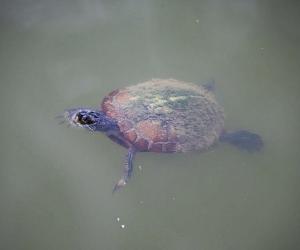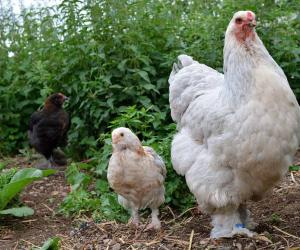5 Cat Personality Types and How To Tell Which One Your Cat Has
Since the days of the Egyptian pharaohs, if not even earlier, cats have been and continue to be enigmatic creatures that captivate our hearts and homes. They often leave us puzzled about what’s going on inside those furry little heads. While they may not speak our language, cats have complex personalities that influence their behaviors, preferences, and even their relationships with us and other animals. But what exactly is personality, and how is it formed? Can it change over time? And most importantly, how can understanding these aspects of personality help us build a better relationship with our feline friends?
In this comprehensive guide, we’ll delve into the fascinating world of feline personalities, exploring scientific models like the well-established “Feline Five” and the alternative “Seven Feline Personalities.” We’ll also discuss what constitutes personality, delve into the factors that influence it, and explore the possibility that, just like humans, cats’ personalities can change over time.
Whether you’re a new cat parent trying to understand your kitten’s erratic behavior or a long-time owner looking to deepen your bond with your feline companion, this article aims to serve as your go-to resource.
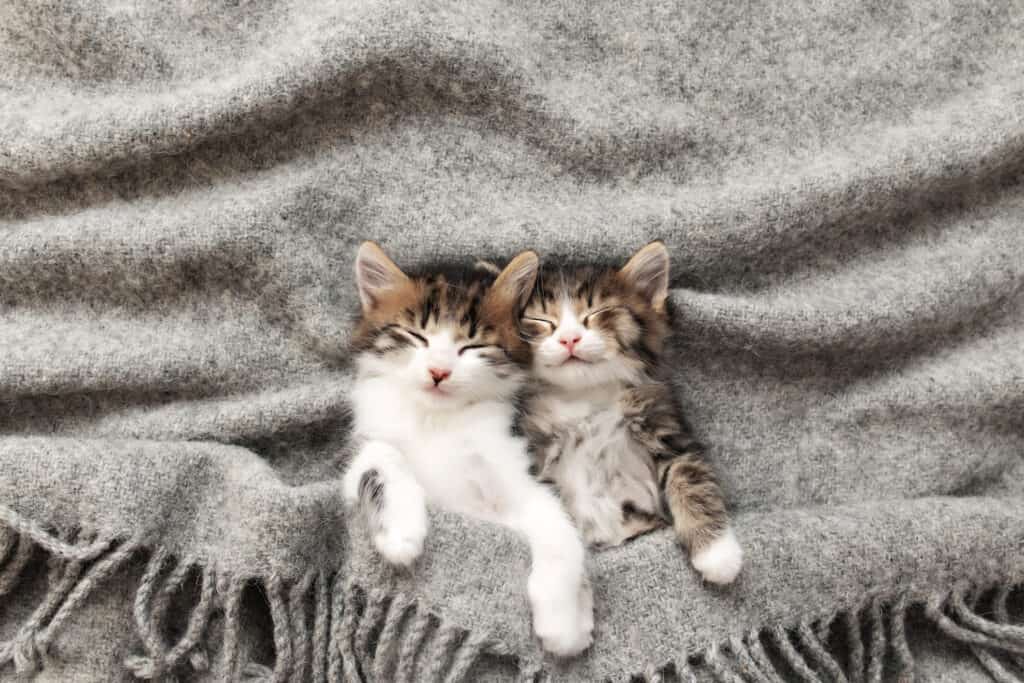
©iStock.com/Olena Ivanova
Personality: What Is It? And How Does It Apply to Cats?
Personality serves as the cornerstone of individuality, shaping how we interact with the world and each other. In humans, personality is often described as a blend of traits, temperament, and character. These each contribute to the unique patterns of thoughts, feelings, and behaviors that set us apart from one another. But what about our feline friends? Do they too have personalities that influence their behaviors and interactions? The answer is a resounding yes.
What Makes Up Human Personality?
Traits:
These are characteristic patterns in how a person thinks, feels, and acts. Examples include extroversion, loyalty, and courage.
Temperament:
This is the innate part of personality, something you are born with. It involves predispositions to act and feel in certain ways.
Character:
This includes core beliefs and ethical codes that influence behaviors and decisions.
Interactions and Moods:
Personality is most clearly expressed in interactions with others, including moods, attitudes, and opinions.
Personality isn’t static. Rather, it evolves over time, influenced by both genetics (nature) and environment (nurture). Yet, past a certain age, personality traits tend to stabilize, leading to consistent behaviors and reactions across different situations.
The Study of Personality
Known as personology, the study of personality is a multidimensional field that examines how people differ in the ways they express themselves. Various theories aim to explain the structure and development of personality, but all concur that it plays a pivotal role in determining behavior.
The Feline Connection
So, how does all of this relate to cats? Just like humans, cats have their own personalities, as proved by the myriad viral videos floating in cyberspace. Their unique personalities influence everything from how they interact with their owners to their reactions to new environments. The scientific models we will discuss further along in this article, such as the “Feline Five,” should convert nonbelievers to knowledgeable acolytes of feline personalities. These models identify traits that mirror human personality traits, like neuroticism and extraversion, that give us valuable insights into feline behavior.
Traits and Temperament
Cats, too, have traits and temperaments. A kitten might be born with a predisposition towards curiosity (temperament), but how that curiosity manifests—i.e., whether the cat becomes a daring explorer or a cautious observer—can be shaped by its experiences and environment (traits).
Character and Interactions
While it may be a stretch to discuss a cat’s “ethical code,” they certainly have preferences and tendencies that dictate their interactions. Whether it’s a fondness for a specific human or a favorite hiding spot or toy, these preferences can be likened to a cat’s “character.”
Nature Nurture
Like humans, feline personalities are shaped by both genetics and environment. This understanding can be essential for cat owners, as recognizing your cat’s innate temperament can guide you in providing an environment that lets their positive traits flourish.
Consistency Over Time
Interestingly, much like human personalities stabilize over time, a cat’s personality also shows signs of consistency as they age. While a kitten may be more adaptable, older cats usually display stable traits. This makes it easier for pet owners to anticipate their needs and behaviors.
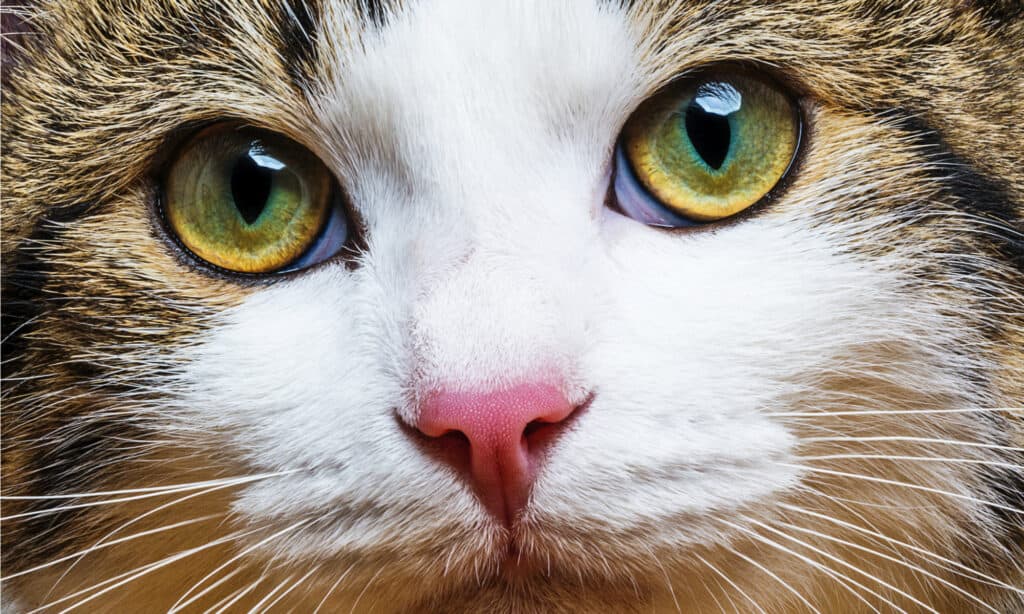
©Kuttelvaserova Stuchelova/Shutterstock.com
Factors That Influence Personality
Understanding what shapes personality is key to both human psychology and, believe it or not, understanding your cat. Various factors, both internal and external, contribute to personality development. Let’s explore these factors and how they could even relate to your feline friend.
Heredity and Genetics
Just as with humans, genetics play a significant role in a cat’s personality. Traits such as aggressiveness or sociability may be passed down through generations. For instance, certain breeds are known for specific temperaments, like the playful nature of Siamese cats or the calm demeanor of British Shorthairs.
Environment
The environment, including home, social circles, and even the vet’s office, can greatly impact a cat’s personality. Cats that grow up in stimulating environments are likely to be more curious and active, while those in stressful conditions might develop more anxious tendencies. Of course, this applies to humans as well.
Culture
Though it might sound odd, the “culture” within a household or even a neighborhood of pet owners can influence a cat’s behavior. Are the local cats mostly indoor or outdoor? Are they accustomed to human interaction or are they feral? These factors can shape a cat’s expectations and reactions to various situations.
Education (Training)
Just as education shapes human personality, training and socialization experiences are key to feline personality development. A well-socialized kitten is likely to grow up into a well-adjusted cat, more at ease with both humans and other animals.
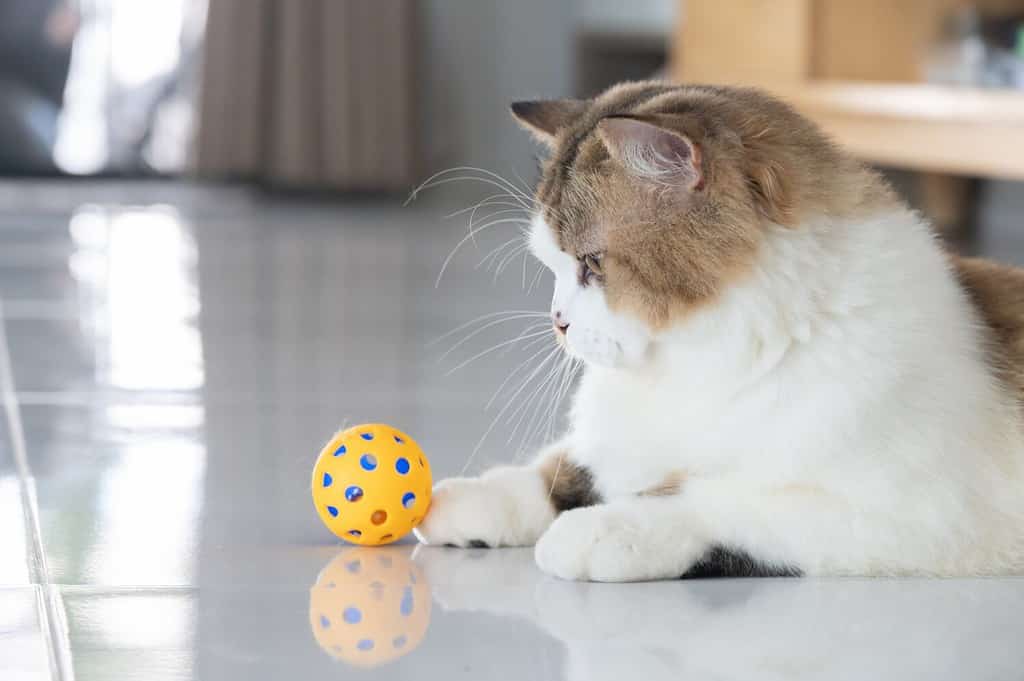
©Boyloso/Shutterstock.com
Family Environment
The family setting is as crucial for cats as it is for humans. Cats learn their initial social behaviors from their mothers and siblings. The attitudes and expectations of human family members can also significantly influence a cat’s personality.
Workplace Environment
While cats don’t have traditional “jobs” (unless “supervising,” i.e., napping, while you’re working on, say, article writing, counts), their roles within a household can influence their behavior. Are they the solo pet, or part of a multi-animal household? Are they indoor hunters, chasing toys, or outdoor explorers bringing back “gifts”? Each role can shape a cat’s personality and skill set, whether that includes proficiency as an avant-garde typist or snoring supervisor.
Life Experiences
As is true for all social creatures, life experiences, including significant events like moving to a new house or the arrival of a new pet, can alter a cat’s personality. Cats can adapt and even change their attitudes and behaviors in response to such major life events.
Situation
Just as humans may act differently in a boardroom compared to a bar, cats also adapt their behavior based on their immediate situation. A cat may be the queen of her home territory but then act timid and submissive at the vet’s office.
The Interplay of Factors
It’s crucial to understand that these factors do not operate in isolation. Just as human personalities are shaped by a complex interplay of genetics and environment, so too are feline personalities. Understanding this can help pet owners provide an environment that nurtures their cat’s positive traits while mitigating the negative ones.
Personality and Change Over Time
It’s a common misconception that personalities are set in stone, unalterable from cradle to grave. However, research paints a more nuanced picture: both humans and cats experience shifts in personality, although the rate and direction of these changes can vary widely.
Human Personality Over Time
Developmental Changes:
Studies indicate that traits like conscientiousness and agreeableness tend to increase across different age ranges, particularly in a person’s 20s.
Rank-Order Stability:
This term refers to the maintenance of individual differences in personality traits over time. While this stability increases in early life, it tends to plateau in young adulthood.
Positive Evolution:
Contrary to some beliefs, personality changes are usually for the better. Adults often become more agreeable, conscientious, and emotionally resilient as they age. However, these changes unfold gradually, over years or even decades.
Feline Personality Over Time
Kitten to Adult:
Just like human children, kittens go through significant personality changes as they mature. A rambunctious kitten may mellow out as it ages, or a timid kitten could become more outgoing with positive socialization experiences.
Life Experiences:
As noted above, cats are also influenced by significant life events, such as moving to a new home or the arrival of a new family member (be it human or animal). These experiences can cause shifts in behavior and temperament.
Stability in Adulthood:
Although less studied than in humans, anecdotal evidence suggests that a cat’s personality traits become more stable as they reach adulthood. However, gradual changes can still occur, especially in response to shifts in their environment or health status.
Genetic and Environmental Influences
Both genetic and environmental factors contribute to personality stability and change in both species. While genetics lay the foundation (think of it as setting the initial conditions), environmental factors, ranging from family dynamics to life-altering events, can significantly shape personality over time.
Subtle but Significant Changes
It’s important to note that changes in personality traits are often subtle and may go unnoticed in the short term. But over a longer period, these changes can become more pronounced and may require adjustments in how we interact with each other and our pets. Conversely, sudden, dramatic changes may indicate potentially serious underlying issues.
The Science Behind the Models
Understanding the intricacies of feline behavior calls for a scientific lens that can offer both validity and depth. Two major models have emerged in the scientific community to help us decode the feline psyche: the “Feline Five” and the “Seven Feline Personalities.”
Feline Five
Originating from research conducted in South Australia and New Zealand, the “Feline Five” is a rigorously validated model that has become a cornerstone in animal behavior studies. It identifies five core personality traits in domestic cats: neuroticism, extraversion, dominance, impulsiveness, and agreeableness.
Why It’s Significant
The Feline Five offers an empirically based approach to understanding your cat. It allows veterinarians, behaviorists, and pet owners to tailor care and training to each cat’s unique personality. Moreover, it’s been instrumental in studies exploring the correlation between feline and human personalities.
Seven Feline Personalities
As an alternative to the Feline Five, some researchers and practitioners propose a model of seven distinct feline personalities. While it hasn’t gained as much mainstream scientific validation, this model provides a different lens through which we can interpret cat behavior.
Traits Covered:
This model goes beyond the Feline Five to include traits like curiosity, playfulness, and independence, among others.
Why It’s Significant:
The Seven Feline Personalities model allows for more nuanced descriptions of feline behavior. It can be particularly useful for pet owners who find that the Feline Five doesn’t quite capture the full range of their cat’s quirks and characteristics.
Comparing the Models
Both models offer valuable insights, but they serve different needs and are best suited for different contexts.
Feline Five:
Rooted in scientific research, this model provides empirically supported categories and is often cited in academic studies.
Seven Feline Personalities:
This model offers a more personalized approach, resonating with pet owners who seek a deeper emotional connection with their cats.
While it’s tempting to pit one model against the other, the truth is they can be complementary. Understanding your cat’s personality may involve a blend of both scientific rigor and personal observation. For our purposes here, we will anchor our investigation with the more established Feline Five model. But we do exhort the feline enthusiasts out there to explore the Seven Feline Personalities model, as it offers valuable insights.
The Feline Five: Five Core Personality Types
Understanding your cat begins with recognizing their core personality traits. Drawing from rigorous research, the “Feline Five” identifies five fundamental dimensions that can help you decode your feline friend’s behaviors and needs.
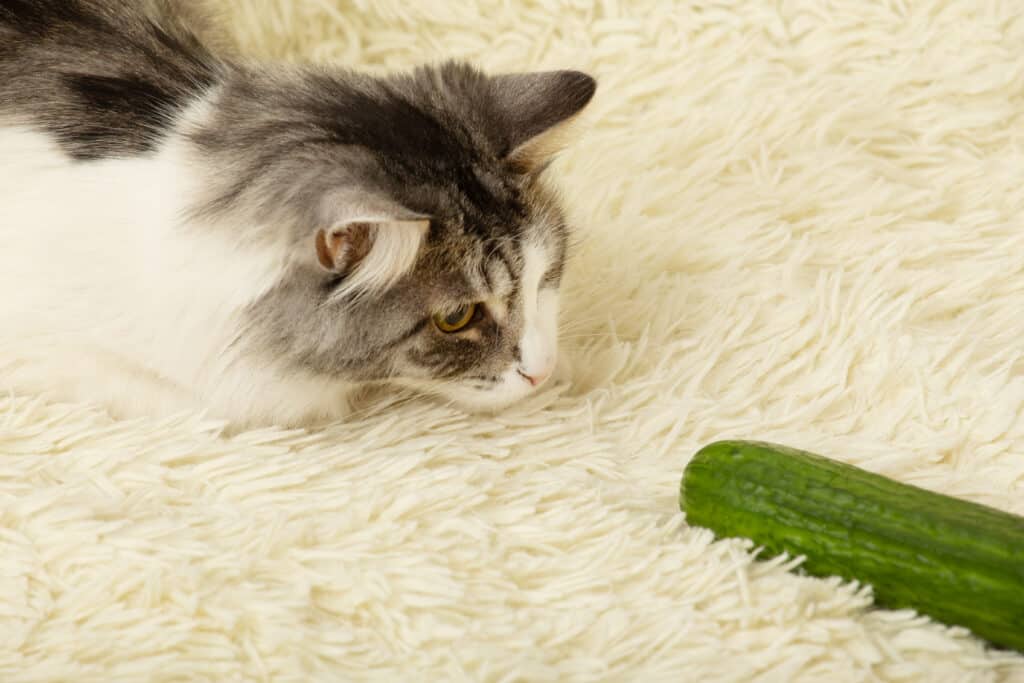
©tugol/Shutterstock.com
Neuroticism
Characteristics:
Cats high in neuroticism are often anxious, fearful, and suspicious. They may appear shy and are generally less adaptable to change.
Identification Tips:
Watch for signs like excessive hiding, trembling, or vocalizations like hissing when in unfamiliar environments.
Tips for Owners/Cat Servants:
To help your neurotic cat, provide a stable environment with plenty of safe hiding spots. Use treats and gentle interaction to build trust. A pheromone diffuser may also help calm anxieties.
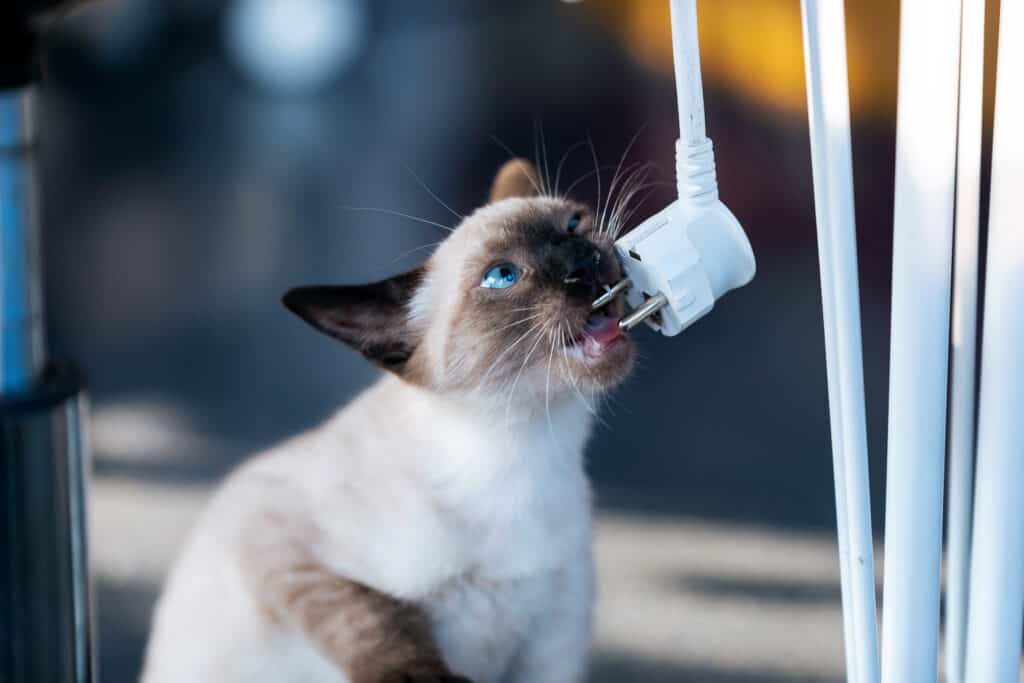
©iStock.com/nensuria
Extraversion
Characteristics:
Extraverted cats are sociable, outgoing, and active. They are explorers at heart and love engaging with their environment.
Identification Tips:
If your cat is quick to approach strangers and seems always eager to investigate new objects or spaces, they’re likely extraverted.
Tips for Owners/Cat Servants:
Keep an extraverted cat stimulated with interactive toys and games. Consider playdates with other pets but monitor interactions to ensure everyone gets along.
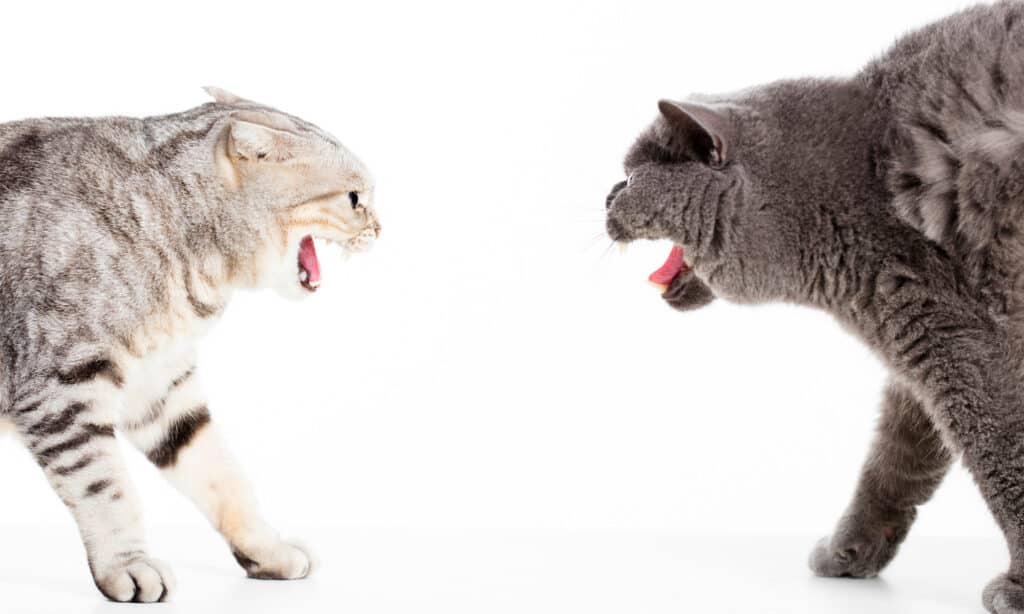
©iStock.com/Tomwang112
Dominance
Characteristics:
Dominant cats are assertive and like to establish control over their environment, which may include other animals and even humans.
Identification Tips:
Signs include territorial marking, aggressive posturing, or attempting to herd other pets or people.
Tips for Owners/Cat Servants:
Provide clear boundaries and use positive reinforcement techniques. Multi-cat households may need separate feeding and litter areas to avoid conflict.
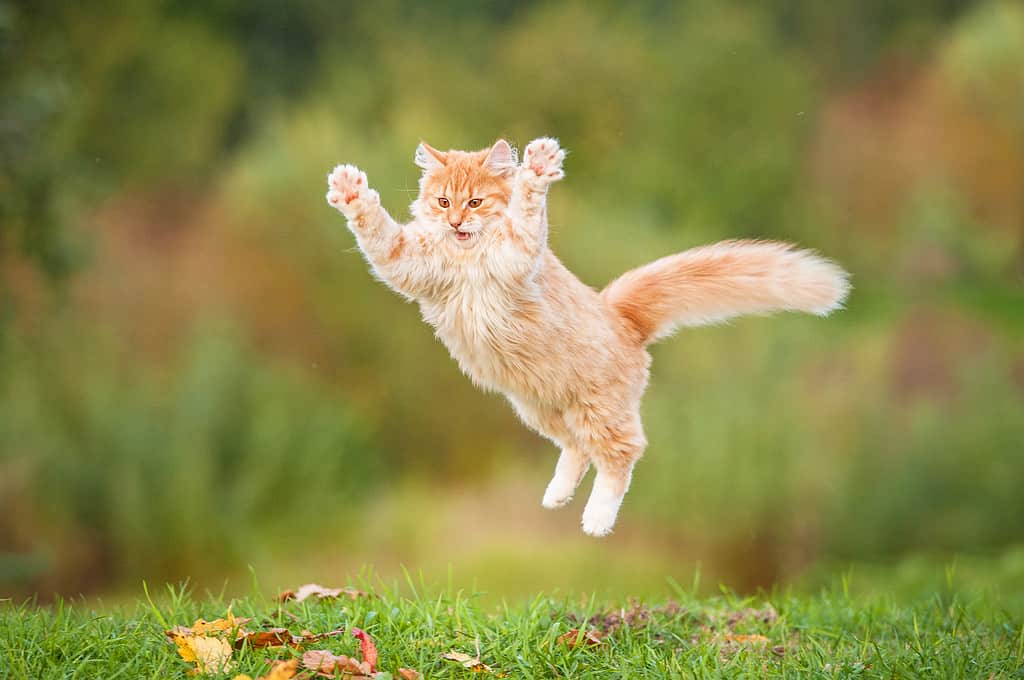
©Rita_Kochmarjova/Shutterstock.com
Impulsiveness
Characteristics:
Impulsive cats act on a whim. They may exhibit sudden bursts of energy or seem unpredictable in their actions.
Identification Tips:
Look for sudden mood swings or erratic movements.
Tips for Owners/Cat Servants:
Offering a variety of toys can help channel their impulsiveness into play. Make sure their environment is safe for spontaneous escapades.
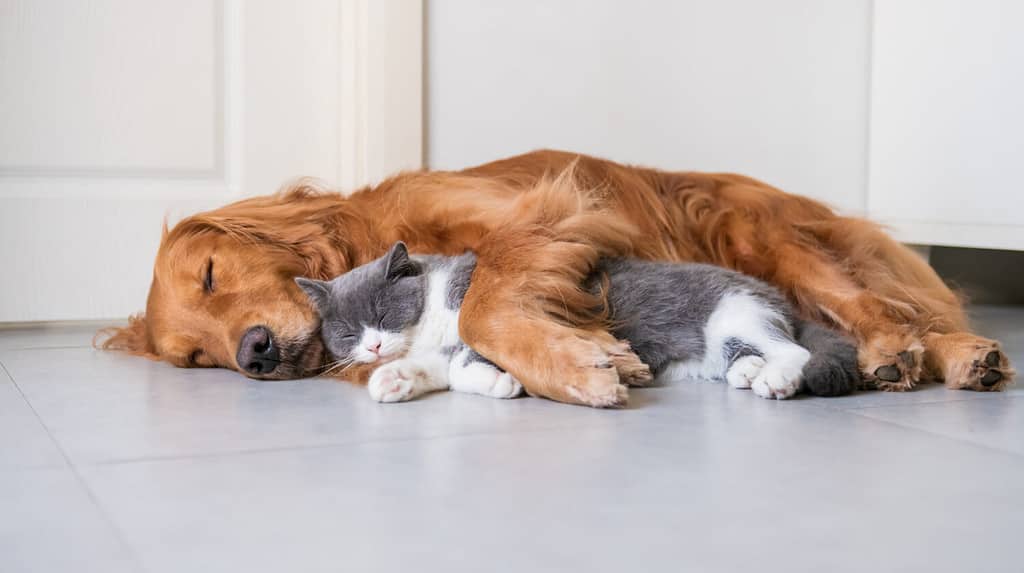
©Masquad/Shutterstock.com
Agreeableness
Characteristics:
Agreeable cats are friendly, gentle, and cooperative. They generally have positive interactions with humans and other animals.
Identification Tips:
A cat that enjoys cuddling and rarely shows aggression is likely high in agreeableness.
Tips for Owners/Cat Servants:
Continue to reinforce this positive behavior through treats, affection, and positive verbal cues.
How to Assess Your Cat’s Personality
If you’ve ever wondered what goes on in your cat’s mind, you’re not alone. Understanding your cat’s personality can not only satisfy your curiosity but also improve your relationship with your feline friend. Here’s a practical guide to help you figure it all out.
Quick Reference: Feline Five Characteristics
| Personality Trait | Key Characteristics | Common Signs |
|---|---|---|
| Neuroticism | Anxious, fearful, less adaptable | Excessive hiding, trembling, hissing |
| Extraversion | Sociable, outgoing, active | Approaches strangers, explores new spaces |
| Dominance | Assertive, territorial, controlling | Territorial marking, aggressive posturing |
| Impulsiveness | Sudden bursts of energy, unpredictable | Sudden mood swings, erratic movements |
| Agreeableness | Friendly, gentle, cooperative | Enjoys cuddling, rarely aggressive |
Step 1: Observe and Take Notes
Spend some time observing your cat in various situations—when they’re alone, interacting with you, or in social settings with other animals. Take notes on their behaviors, reactions, and moods.
Step 2: Look for Patterns
Review your notes and look for recurring behaviors or reactions. Do they always hide when guests come over? Are they generally the instigator in playtime with other pets? These patterns can give clues about their dominant personality traits.
Step 3: Refer to the Feline Five
Use your observations to identify which of the “Feline Five” traits best describe your cat. Refer back to the quick-reference table above to help you make connections between your observations and known feline personality traits.
Quick Reference: Tips for Owners/Cat Servants
| Personality Trait | Tips for Owners |
|---|---|
| Neuroticism | Provide a stable environment, build trust with treats, consider pheromone diffusers |
| Extraversion | Keep stimulated with interactive toys, consider pet playdates |
| Dominance | Provide clear boundaries, separate feeding/litter areas in multi-cat households |
| Impulsiveness | Offer a variety of toys, ensure a safe environment |
| Agreeableness | Reinforce positive behavior through treats and affection |
Step 4: Tailor Your Interactions
Based on your cat’s dominant personality traits, tailor your interactions and care to better suit their needs. Whether it’s providing more hiding spots for a neurotic cat or engaging in active play with an extraverted one, small changes can make a big difference.

©Svetlana Rey/Shutterstock.com
Conclusion: The Purr-spectives of Understanding Your Cat
Whether you’re a new cat owner entranced by your kitten’s endless hijinks or a seasoned cat lover looking to deepen the bond with your long-time feline companion, understanding your cat’s personality can be a game-changer. By exploring scientific models like the Feline Five and the alternative Seven Feline Personalities, you can better harmonize the tenor of your knowledge with the pitch of your heart.
Beyond satisfying our natural curiosity, understanding our cats’ personalities allows us to provide more targeted care, forge stronger emotional connections, and even anticipate certain behaviors. Tailoring your interactions based on your cat’s unique personality traits can lead to a happier, less stressful environment for both of you.
In the grand scheme of things, knowing your cat’s personality is about more than decoding their mysterious behaviors. It’s about recognizing them as complex beings with preferences, fears, and quirks—much like us humans. And in doing so, we not only enrich their lives but also add another layer of joy and understanding to our own.
